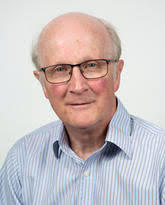
Nigel Shrive, PhD
Professor
Contact information
Research
Research interests
Dr. Shrive's research is in the area of structural mechanics, ranging from materials science at the one end to structural behaviour at the other. Dr. Shrive is also the graduate coordinator for the University of Calgary's Biomedical Engineering Graduate program.
The principles are applied to masonry within the specific field of Civil Engineering, and to the soft tissues of joints in collaboration with colleagues from the Faculty of Medicine. The work in masonry has led to a better understanding of the behaviour and failure of the material when subject to compression. Face-shell bedded masonry has been a targeted type of masonry in recent years, particularly when subject to concentrated load. Results of the work have led to changes in the codes of practice of both Australia and Canada. The work on fracture has found wider application to concrete and rock. Post-tensioned masonry has been studied extensively, with more recent work focusing on the use of Advanced Composite Materials (ACMs).
In the Biomechanics area, the research has been focused on the mechanical and structural behaviour of ligaments and articular cartilage. The interest has been in defining how the properties of these tissues change with age, and improving the healing of damaged and transplanted tissues to restore as close to normal function as possible. Many new instruments have been devised for various aspects of the work, with one now under license to a major world-wide manufacturer of testing equipment. Clinical treatment of damaged ligaments has changed as results have been published. Recent work has been centered on testing whole joints with a robot.
In the area of cardiac mechanics, the finite element method has been applied to models of the cross-section of the heart under normal and abnormal loading. The role of the septum (separates the right and left ventricles) has been examined as, has the role of the pericardium. The latter appears to have a major role in regulating the relative outputs of the two ventricles, while deformation of the former under abnormal loading induces zones of compression in the wall of the left ventricle. The zones have been shown to be associated with reduced blood supply to the muscle with possible clinical consequences. With his colleague, Dr John Tyberg, Dr Shrive has also investigated why pressure and blood flow in the aorta with time in a heart beat follow different patterns. They ascribe these to two features, blood storage as the aorta expands under pressure, and blood flow - an interpretation different to the 50 yr old forward and backward wave paradigm that exists in the literature.
Computer Methods in Biomechanics and Biomedical Engineering (CMBBE) 2015 International Symposium
Dr. Shrive was one of the organizers of the 2015 CMBBE International Symposium. You can find the conference proceedings here.

